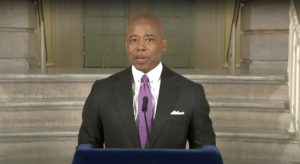Science of reading bridges partisan divide in education
In an era of unprecedented partisanship, education reformers from both sides of the aisle are finding common ground in a surprising place: reading instruction.
In her recent State of the State…

In an era of unprecedented partisanship, education reformers from both sides of the aisle are finding common ground in a surprising place: reading instruction.
In her recent State of the State address, New York Gov. Kathy Hochul proposed two measures emphasizing the science of reading.
“Reading is the foundation of our education, but New York State is currently not meeting basic reading proficiency levels,” Hochul acknowledged in her speech. “We cannot continue to allow our kids to fall further behind by utilizing outdated and discredited approaches to reading comprehension. Our Back to Basics initiative will reset how schools approach reading, returning to scientifically proven techniques.”
The governor proposed spending $10 million to retrain teachers in proper reading instruction and legislation requiring school districts to adopt best reading practices.
In the 1980’s and 1990’s, a new method called the “three-cueing system” or “whole language” approach suggested that students were better readers when they used context or other clues to guess what a word might be.
But education researchers have since found that phonics – sounding out each letter to form a word – was a far superior method and become known as the “science of reading.”
Reading proficiently by 3rd grade is crucial for public school students, since they will be expected to read for content in 4th grade and beyond.
Students who struggle to read in those early elementary years have lower academic achievement, are more likely to drop out of school, and have reduced earning potential as adults.
And the prognosis for reading in America’s public schools isn’t good.
According to the 2022 NAEP exam, just 32% of the nation’s 4th graders read proficiently, and 39% scored “below basic,” the lowest category.
Results weren’t much better in New York, where less than 40% of students read at grade level.
But evidence-based reading instruction could change that.
In 2013, Mississippi implemented the science of reading and jumped from 49th among states in 4th grade reading to 29th.
Its NAEP scores nearly doubled, from just 17% proficiency in 1998 to 31% in 2022.
Now, leaders in both red and blue states are implementing the phonics approach.

A June 2023 report from FutureEd showed nearly 30 states that require schools to use the science of reading, and some have even banned the three-cueing method.
Since FutureEd’s report was published, even more states – such as Ohio, California and now New York – have made the switch back to phonics.



